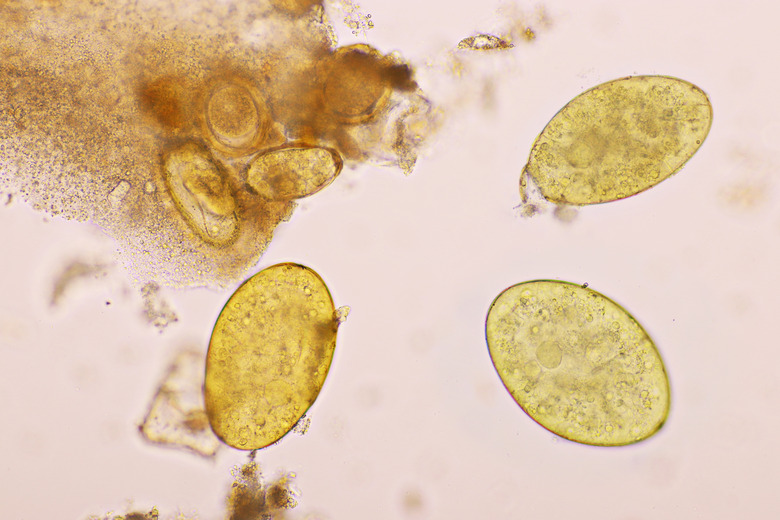Pinworms Life Cycle
Pinworms are parasitic roundworms with a four- to eight-week life cycle. They have the appearance of a thin, white thread that is less than half an inch in length, and may be seen around the anus of infected people or in their fecal matter.
Eggs
Eggs
The adult female pinworm travels to the rectum to lay her eggs. She moves at night, depositing her eggs around the rim of the anus, and then she dies.
Human Host
Human Host
The human host scratches the anus; itching is triggered by the movement of the female and the presence of her eggs. The eggs are caught under fingernails, transferred to skin, linens and objects in the home, and eventually the eggs may be carried to the mouth.
Transmission
Transmission
Pinworm eggs take six hours to mature. When the eggs are swallowed, they hatch in the digestive tract of a human (animals are not considered a source of infection); when they hatch on the surface of the skin, the larvae make their way into the nearest orifice (the vagina or the anus).
Immature Worms
Immature Worms
Pinworms begin their lives in the small intestine. The larvae migrate to the large intestine and attach to the intestinal wall.
Adult Worms
Adult Worms
Adult worms live in the large intestine or colon. It is suspected that they consume human fecal matter as a source of food.
Reproduction
Reproduction
Pinworms reproduce through sexual contact; pregnant females can lay 10,000 to 15,000 eggs. The time from initial ingestion of eggs to the first incidence of adult egg-laying takes about a month.
Cite This Article
MLA
Moon, Alice. "Pinworms Life Cycle" sciencing.com, https://www.sciencing.com/pinworms-life-cycle-5251320/. 22 November 2019.
APA
Moon, Alice. (2019, November 22). Pinworms Life Cycle. sciencing.com. Retrieved from https://www.sciencing.com/pinworms-life-cycle-5251320/
Chicago
Moon, Alice. Pinworms Life Cycle last modified March 24, 2022. https://www.sciencing.com/pinworms-life-cycle-5251320/
